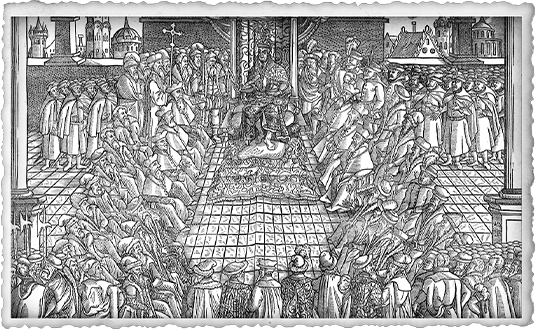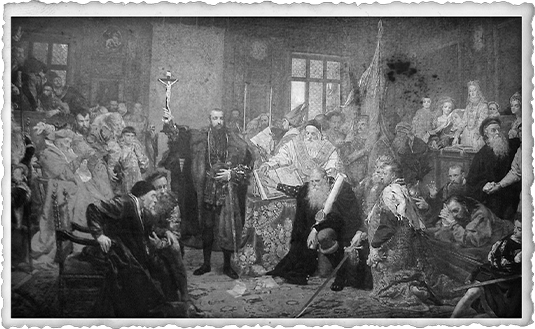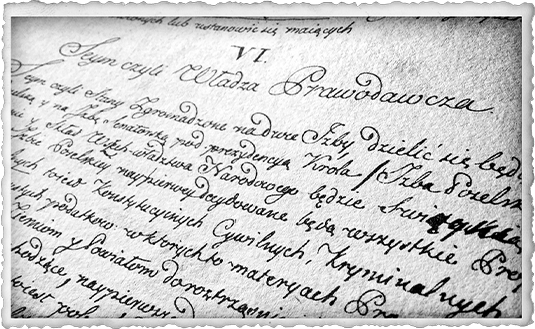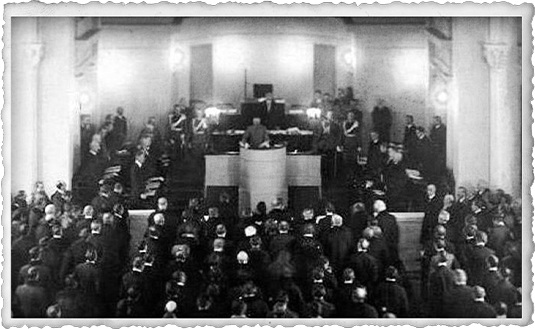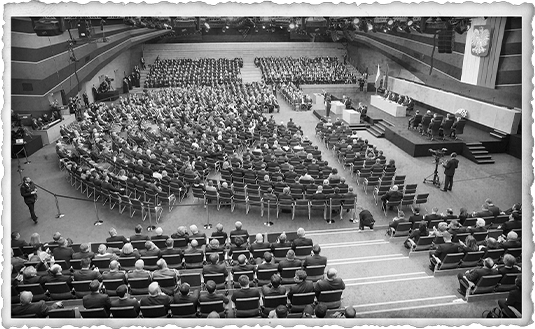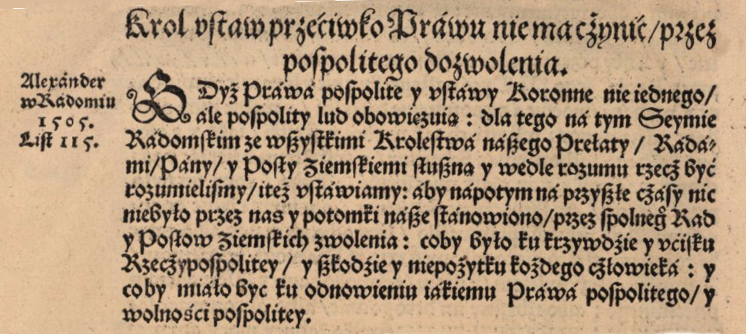Famous sejm in Radom. 1505.
The sejm was convened at the beginning of 1505. Pre-sejm sejmiks debated on 1 February 1505 r. The representatives of the Grand Duchy of Lithuania were invited. The proceedings began on 30 March and ended, after a productive conduct, on 31 May 1505. Many important laws were adopted, among them the Nihil novi constitution (vital for the internal matters), in which the sejm, as a parliament of two chambers, was established the supreme authority, recognising the king as a part of the sejm structure and ipso facto establishing division of powers and authorities. King Alexander, who actively participated in the proceedings, agreed to publish the set of Polish rights. The king also gave effect to many laws and rights, prepared for publishing by the chancellor Jan Łaski.
See: F. Papée, Aleksander Jagiellończyk [Alexander Jagiellon], Kraków 1949; J. Bardach, Historia sejmu polskiego [The history of Polish sejm], t. 1, Warszawa 1984, red. J. Michalski, s. 5-62. W. Uruszczak, Sejm walny w epoce Złotego Wieku [1493-1569] [THe general sejm in the Golden Age] in: Społeczeństwo obywatelskie i jego reprezentacja [1493-1993] [Civil society and its representation (1493-1993)], red. J. Bardach, cooperation: W. Rudnik, Warszawa 1995, s. 48-61; W. Uruszczak, “Sejm Walny wszystkich państw naszych”. Konstytucja Nihil novi i sejm w Radomiu w 1505 roku [“Nihil novi” constitution and sejm in Radom in 1505], Czasopismo Prawno-Historyczne, t. 57, 2005, z. 1, s. 11-24; W. Uruszczak, Statut Jana Łaskiego z 1506 roku. 500 lat tradycji państwa prawa w Polsce [Jan Łaski statue of the year 1506. 500-year tradition of Polish law] , „Czasopismo Prawno-Historyczne”, t. 59, 2007, z. 2, s. 9-17. Ustawodawstwo zob. Volumina Constitutionum, T. 1, cz. 1, Design and layout prepared by S. Grodziski, Irena Dwornicka, W. Uruszczak, Warszawa 1996, s. 138-174.


